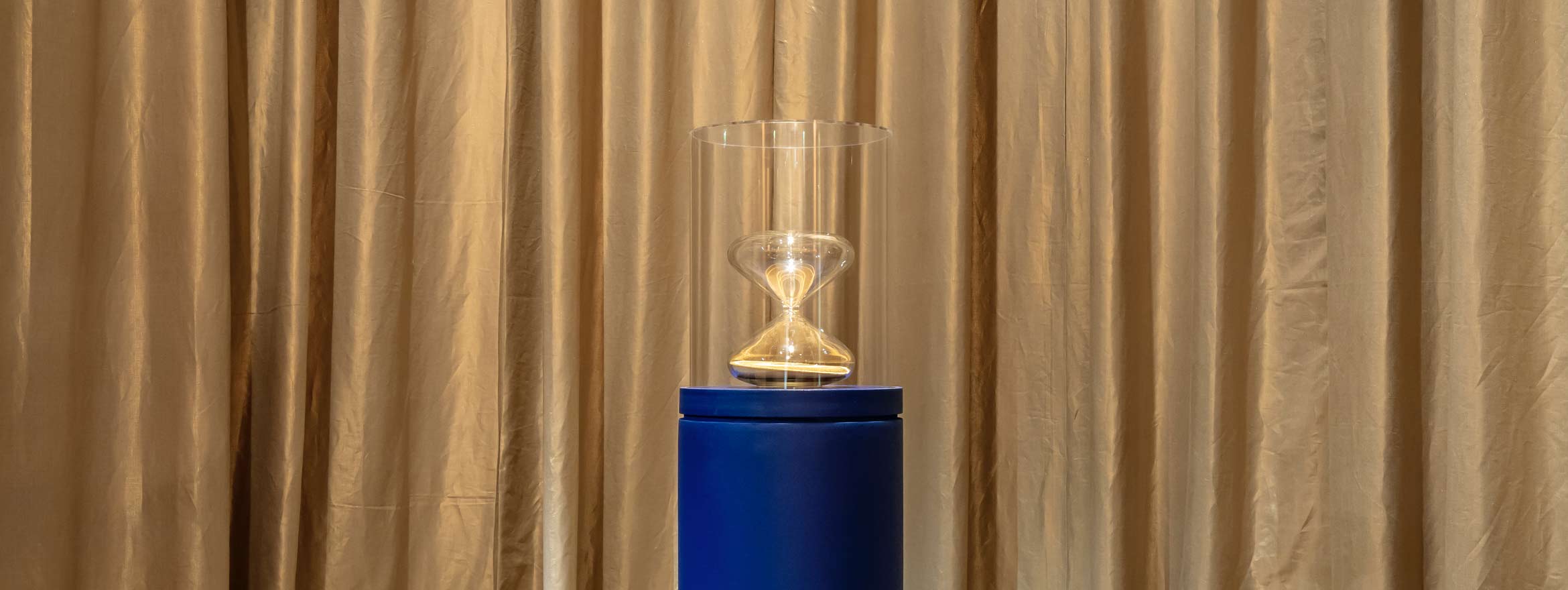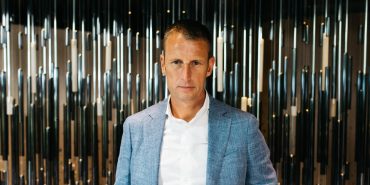Cultural Perspectives • 16 Jul 2021
The Remarkable Journey of The Hourglass by Marc Newson
Our collaboration object with Marc Newson in 2009 for The Hour Glass’ 30th Anniversary has been selected to take up permanent residence at one of the world’s leading design museums, the Musée des Arts Décoratifs in Paris. Below, we explore our collaboration with Marc Newson and how The hourglass came about.
Designed to celebrate the 30th Anniversary of The Hour Glass
The hourglass was born in the Southern Hemisphere, between two islands: Singapore and Australia. In 2009, The Hour Glass approached Australian designer Marc Newson to commission a very special project: to design and produce thirty hourglass objects in commemoration of the company’s 30th anniversary.
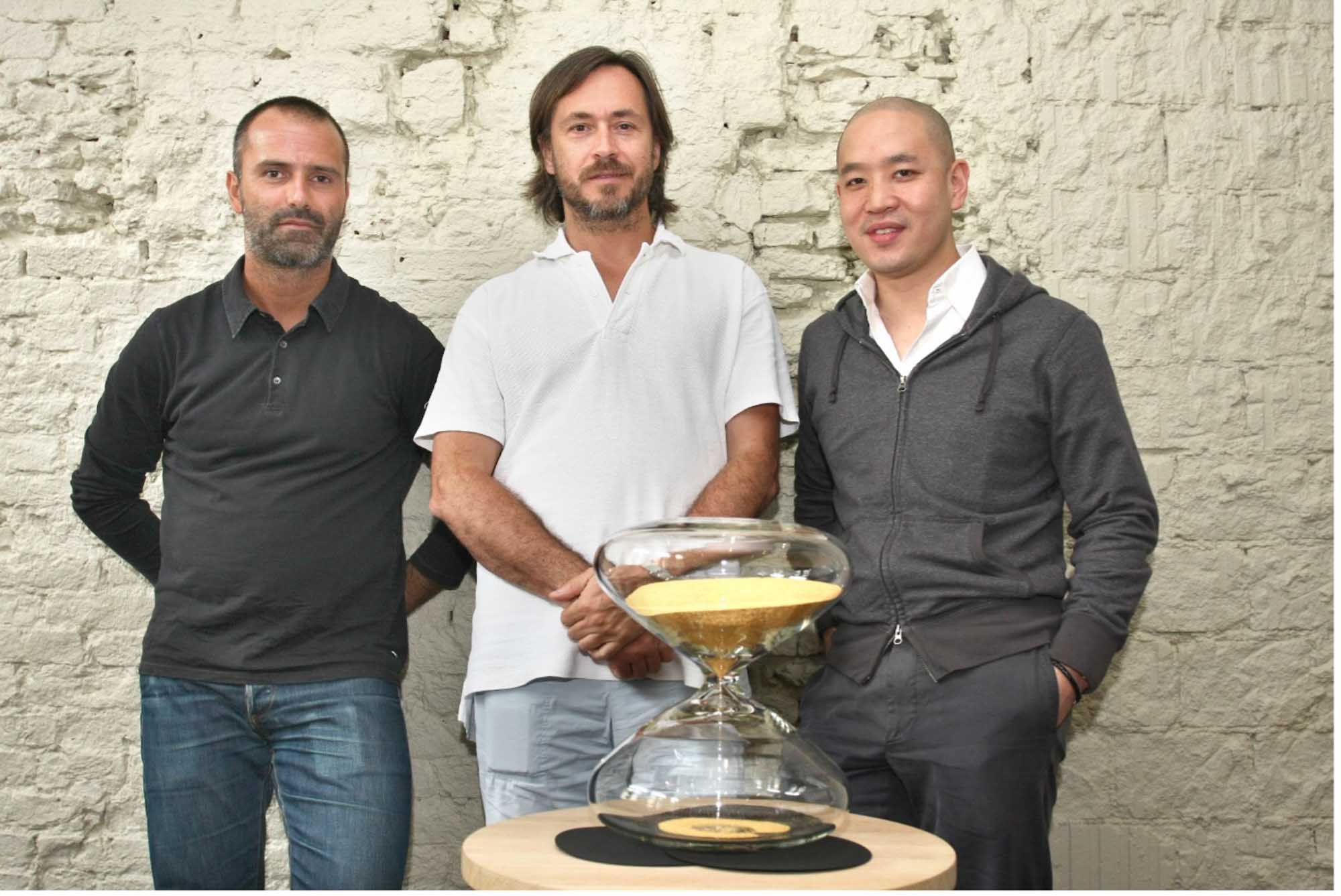
A mesmerizing flow of nanoballs
From the outset, the conceptualization of the hourglass was a challenge.
“I recall we had requested for solid gold nanoballs but after investigating it, decided it wasn’t commercially feasible, as it would have required us to retail one hourglass at a value of US$1 million. In the end, Marc found a workable solution, gold plated stainless steel nanoballs.”
Michael Tay, Group Managing Director of The Hour Glass
The first 30 pieces produced for The Hour Glass formed a pre-series. Delivered to the project sponsor in 2010, most were readily acquired by private collectors, while several pieces now reside in our network of boutiques.
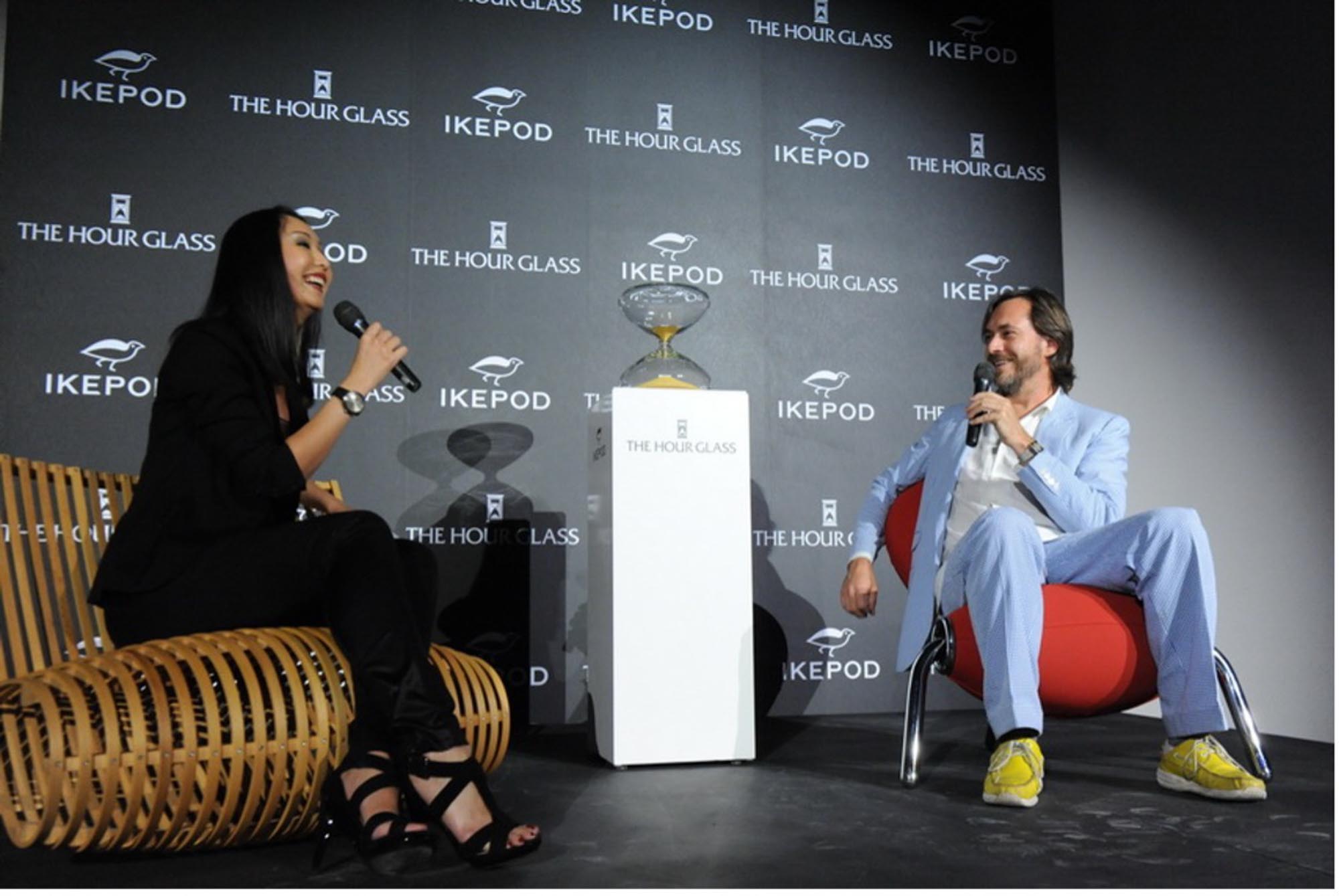
After Ikepod ceased production, Marc Newson founded with long-time partner Nicole Viot – who was part of the first development team of the hourglass objects, the HG Timepiece company to develop, produce and commercialize his timepieces. The first objective was to resume the hourglass production. Then, the plan was to bring other old timepieces to life, turning them into sculptural objects with a strong presence, redesigned by Marc in a philosophical and poetic way.
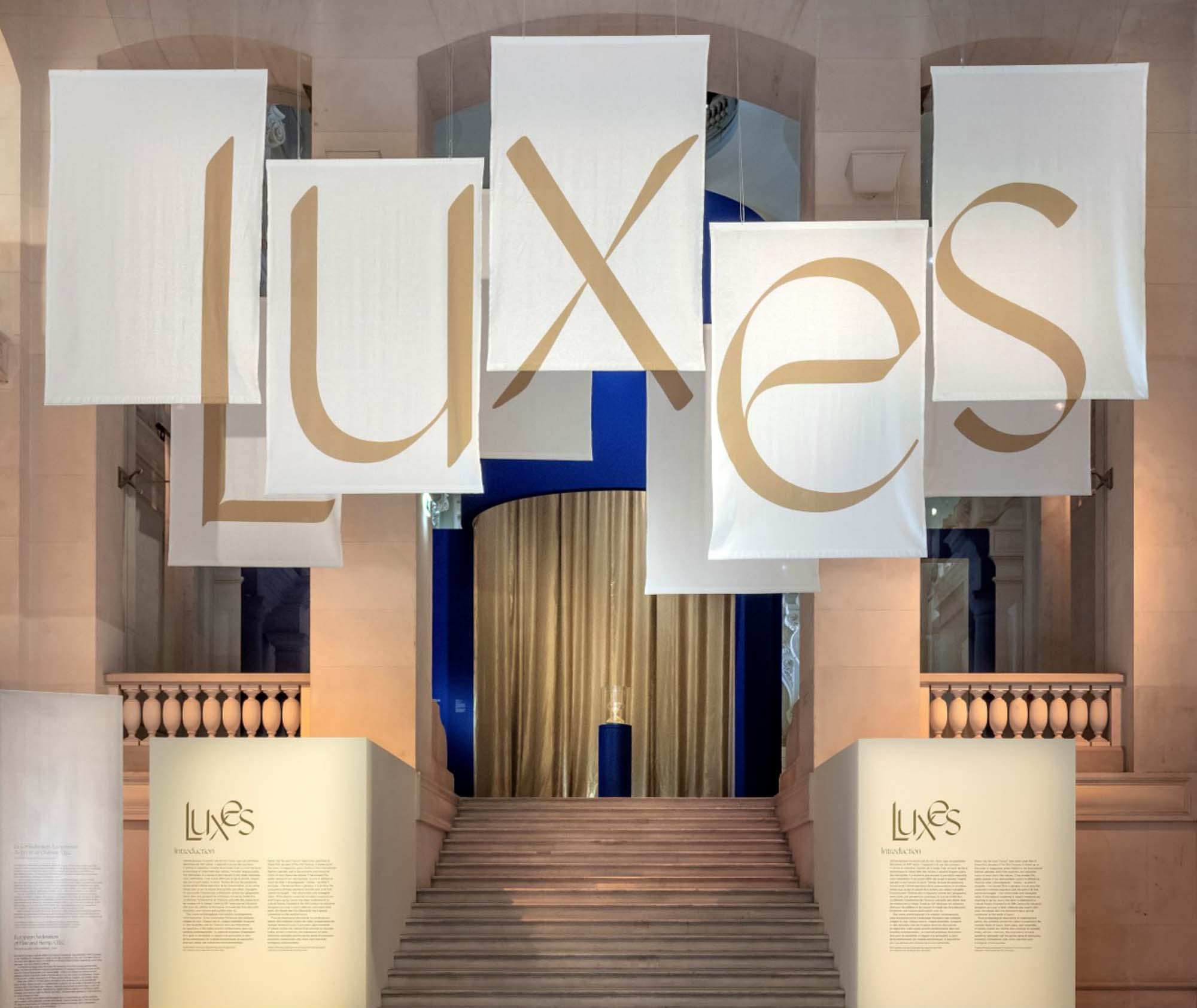
The hourglass is one of the oldest chronometric instruments in the world. The hourglass by Marc Newson demonstrates the passage of time with the mesmerising flow of the nanoballs. Despite its apparent simplicity, it encloses millions of mobile pieces working in harmony. The hourglass was priced according to the extensive R&D investment needed to achieve the exacting tolerance margins required. Unsurprisingly, there wasn’t any hourglass specialists prior to our collaboration with Newson.
Entirely crafted by hand
Entirely crafted by hand, the hourglass is made of a single piece of borosilicate glass (chosen for its durability relative to crystal) blown by a single craftsman skilled at creating the final shape, pushing beyond the materials limitations and the blowing process.
The attention to detail is exceptional. The craftsman is trained for more than one year before obtaining satisfying results. In the past, several master glassblowers tried but to no avail. They gave up after multiple attempts, discouraged by the limited success rate.
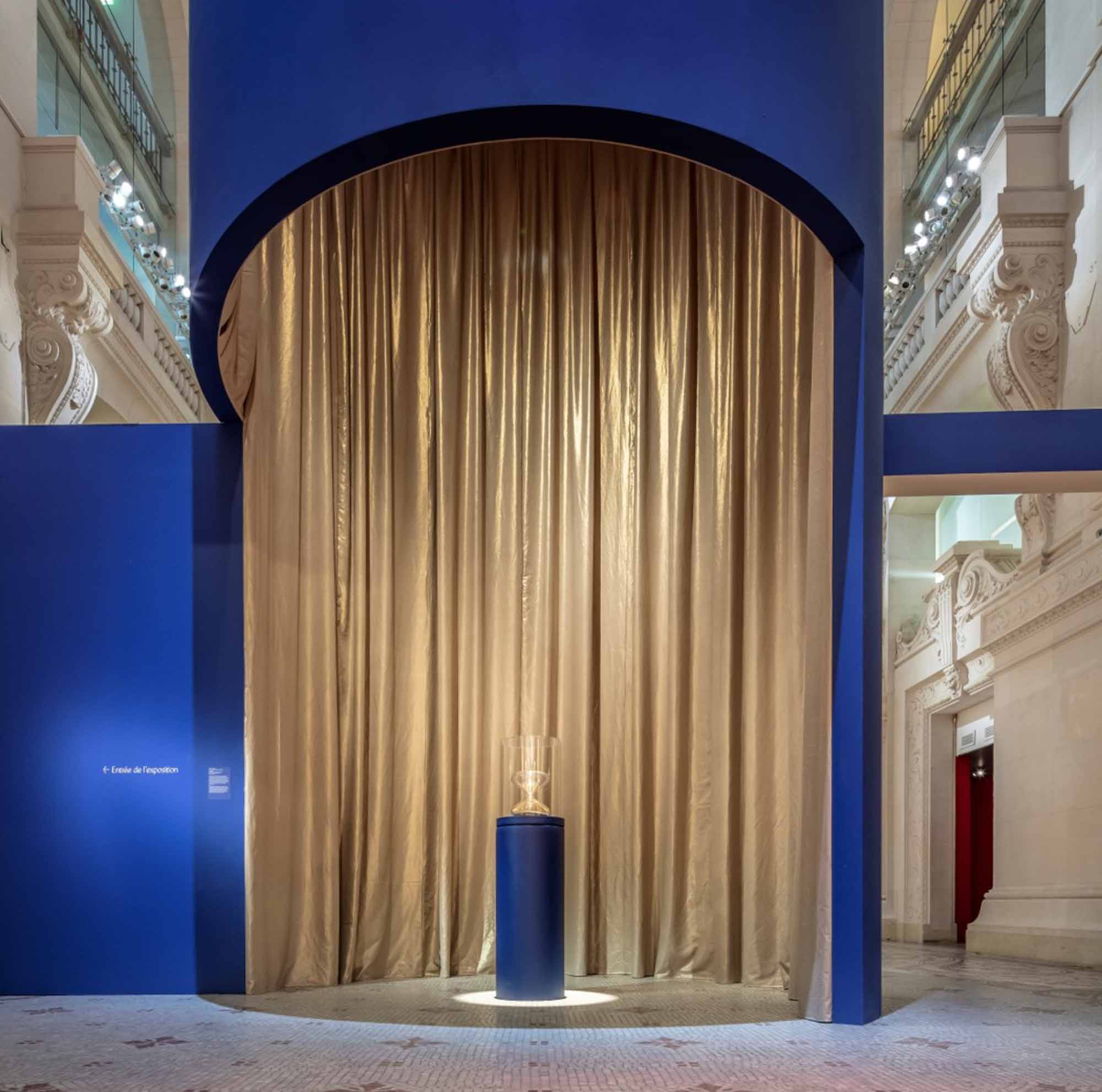
The finesse of hand-blown glass
The glass tube is set horizontally on a turning machine, then heated up and shaped using torches and tools, using a 5 to 7mm thick Schott borosilicate glass, depending on references. Starting with the centre, the glassblower parts the glass into two symmetrical halves, with a centre diameter of only 2.3mm. This step is achieved without any special tools, using only his eye and his intuition.
Once more, the glassblower heats the rotating glass to shape its two globes, simultaneously using his torch and his breath via a long rubber pipe. A shaping tool is necessary to assess the shape and the symmetry of both sides. It is crucial to mirror polish the tool before each use and to keep it pristine white avoiding any impurities which could migrate into the hot glass and cause permanent blemishes. Unfortunately, these inclusions are frequent, despite the high level of skill and attention invested.
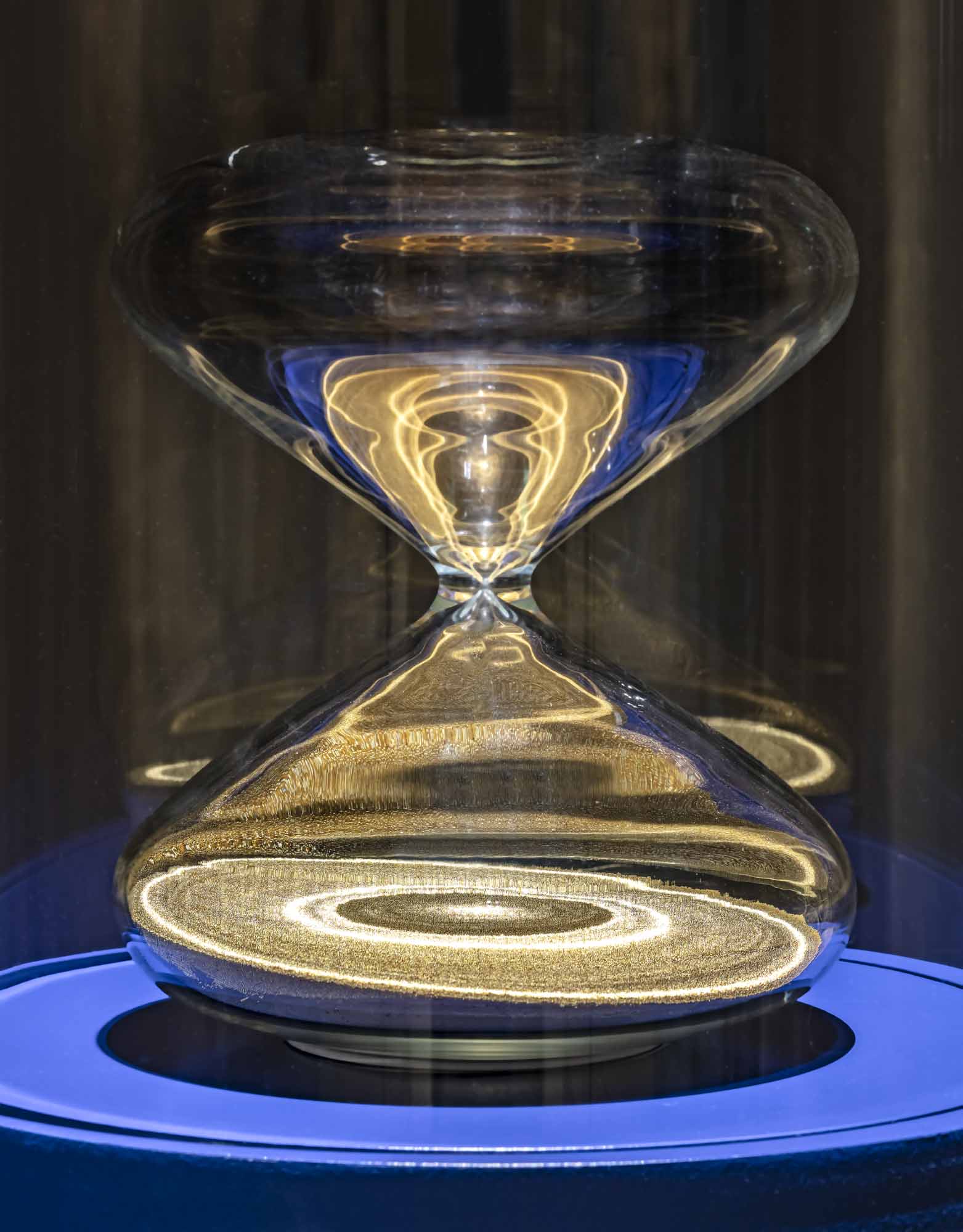
Preserving centuries-old glassblowing techniques
The glassblower closes the first ampule before shaping the second one. Then he leaves a circular opening in the centre of the 2nd ampule, to fill the hourglass. The craftsman gauges again the opening: 5mm. The result is a different opening every time. The craftsman also must shape the glass stopper used to close the hourglass.
Once the hourglass is shaped, the glass is removed from the turning machine and immediately placed into a furnace for more than 12 hours at decreasing heat, in order to re-bake it, while avoiding cracking it. When taking it from the furnace, the temperature is of prime importance: too low and the temperature may create condensation inside the glass. This humidity could create inclusions in the glass and discolour the finished piece.
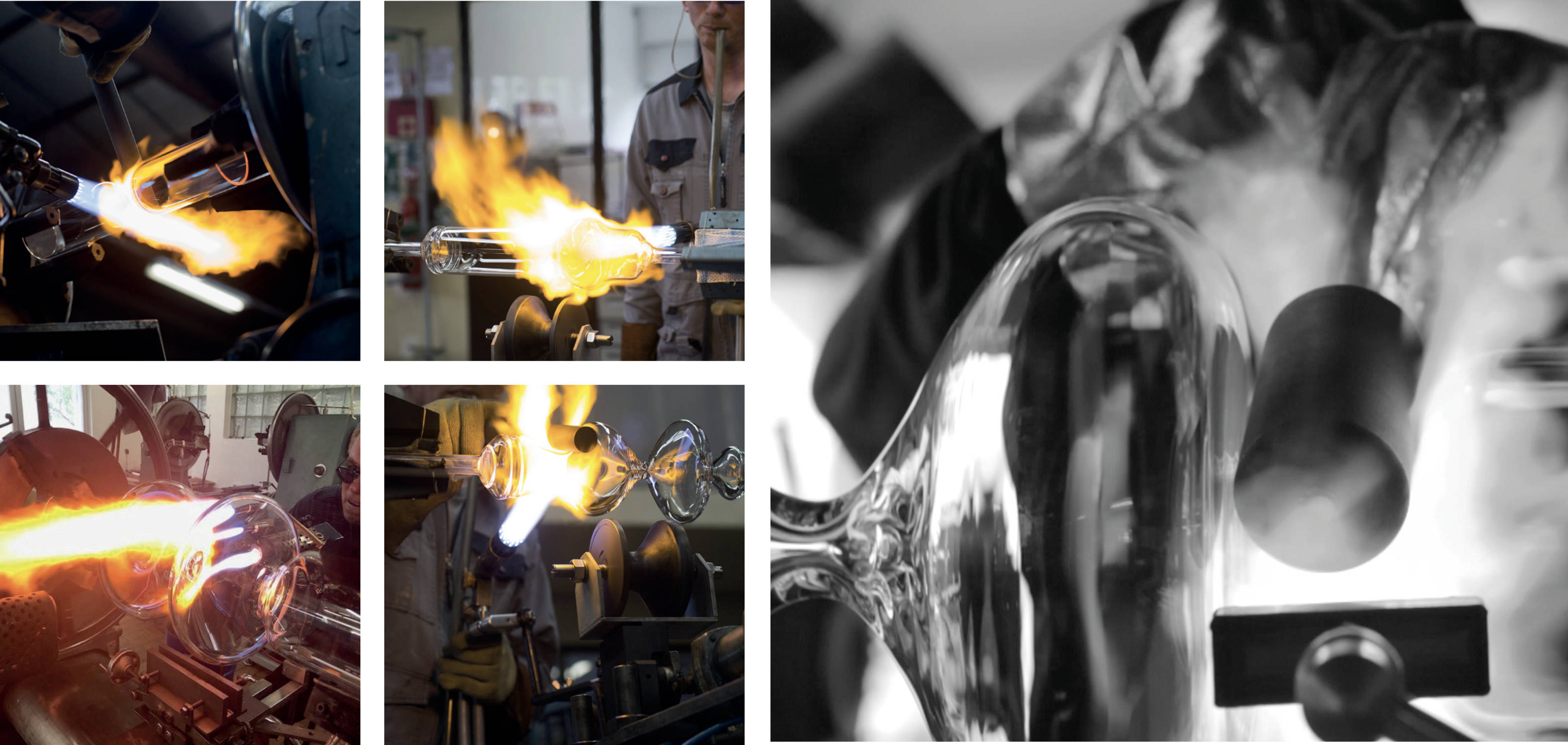
Perfecting the flow of the nanoballs
The nanoballs are then weighted individually to match the desired flow time and poured inside the hourglass. The hourglass is turned over several times to verify the time flows smoothly, the quantity of balls is adjusted until the desired rate is achieved.
Finally, the glass stopper is set onto the opening and permanently sealed with translucent UV glue.
The most sensitive step of process is to ensure the inner diameter and curve of the middle throat that affects the flow of millions of nanoballs, is precisely set for accurate chronometry. Any variation leads to an inconsistent chronometric rate when turning over the hourglass. Hence it is impossible to use pre-blown glass globes. The nanoballs in solid stainless steel are perfectly round for a fluid flow. Their surface is homogeneous and smooth to avoid scratching the glass. They are carefully polished for an eternal shine and coated with a thin layer of fine gold (999, 9/000), fine silver (999, 9/000) or copper.
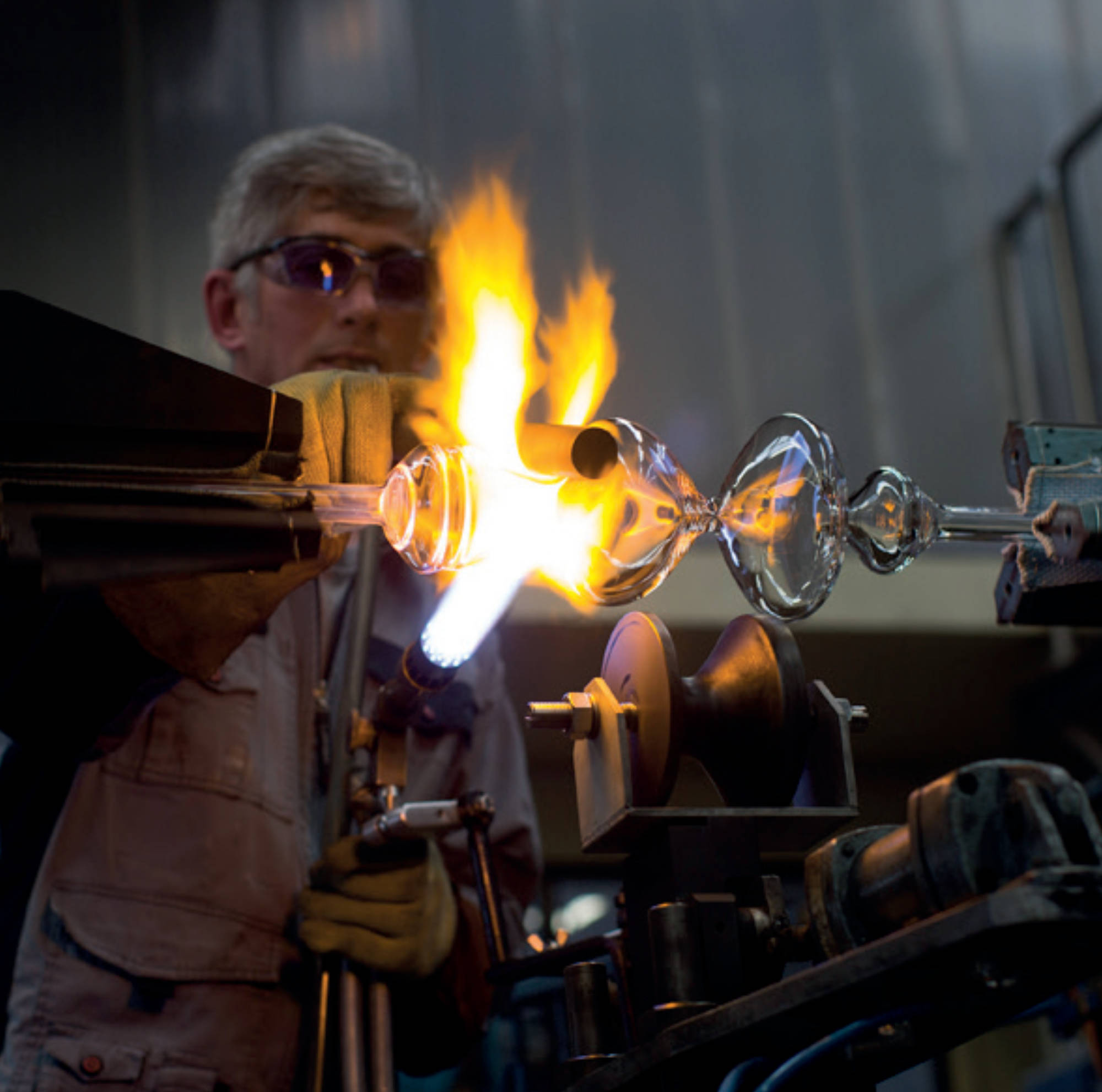
The production of the hourglass has been extensively studied and investigated to ensure high accuracy. Yet the presence of micro-particles in the glass is unavoidable and the sign of its artisanal craftsmanship. Learning from these last few years of experience, Marc and Nicole decided to limit the production of the 60-minute hourglass to 10 units per annum, knowing that the scrap rate is 70%. Scaling production isn’t feasible due to the exacting standards imposed on the master glassblower.
There are three different hourglass references: 60-minutes, 30-minutes and 10-minutes flow time. Each hourglass piece is a reliable timekeeper, its precision ranges from ± 3 minutes to ±1 minute depending on the reference and the environment.
The Hour Glass is very proud to have been able to collaborate with artists such as Marc Newson and commission special design objects. Long live to the Hourglass by Marc Newson and here is to many more inspiring collaborations to come!



